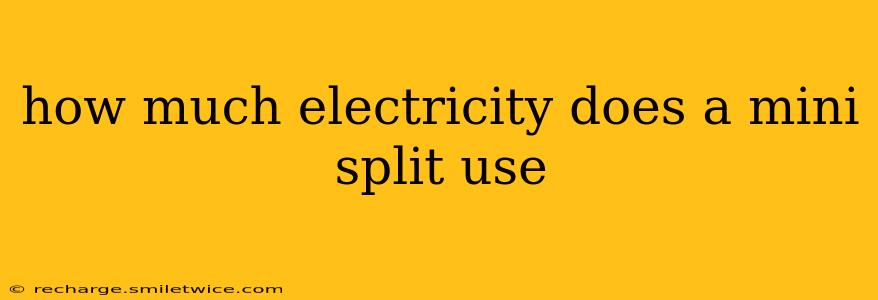Mini split systems are increasingly popular for their energy efficiency and climate control flexibility. But a common question homeowners have before investing is, "How much electricity does a mini split use?" The answer, unfortunately, isn't a simple number. Electricity consumption varies significantly depending on several factors. This comprehensive guide will break down those factors and help you estimate your mini split's energy usage.
What Factors Influence Mini Split Electricity Consumption?
Several key variables determine how much electricity your mini split system will use:
-
SEER Rating: The Seasonal Energy Efficiency Ratio (SEER) is a crucial metric. A higher SEER rating indicates greater energy efficiency. Mini splits typically range from 16 SEER to over 30 SEER. A higher SEER rating means less electricity used to achieve the same cooling effect.
-
Size of the Unit: The capacity of your mini split, measured in BTUs (British Thermal Units), directly impacts energy consumption. A larger unit for a bigger space will naturally use more electricity than a smaller unit for a smaller room. Proper sizing is essential for optimal efficiency. An oversized unit will cycle on and off frequently, wasting energy, while an undersized unit will struggle to keep up, also using more energy than necessary.
-
Temperature Setting: The greater the difference between the indoor temperature setting and the outdoor temperature, the harder the mini split has to work, resulting in higher energy consumption. Setting your thermostat a few degrees higher in summer and lower in winter can significantly reduce electricity usage.
-
Insulation and Air Sealing: A well-insulated and air-sealed home will require less energy to maintain a comfortable temperature, reducing the mini split's workload. Air leaks can force the system to work harder, consuming more electricity.
-
Usage Patterns: How frequently you use your mini split and for how long also plays a role. Continuous use will naturally consume more electricity than occasional use.
-
Maintenance: Regular maintenance, including filter cleaning and professional servicing, ensures optimal performance and prevents inefficiencies that lead to higher energy consumption.
How Can I Calculate My Mini Split's Electricity Usage?
Precise calculation requires knowing your unit's specific SEER rating and BTU capacity, along with your usage patterns and local electricity costs. However, we can offer some general estimations:
A typical mini split with a 16 SEER rating might consume around 1000-2000 kWh per year for a small to medium-sized room. A higher SEER unit (20+ SEER) could significantly reduce this consumption, potentially to 500-1500 kWh per year. Larger units will naturally consume more energy.
To get a more precise estimate for your situation, you can:
- Consult the Unit's Specifications: Your mini split's manual will likely provide estimated energy consumption based on various conditions.
- Use an Online Energy Consumption Calculator: Several online calculators can estimate your energy usage based on your unit's details and usage habits.
- Contact an HVAC Professional: A qualified technician can perform a load calculation to determine the appropriate unit size and predict its energy usage.
How Much Does it Cost to Run a Mini Split?
The cost to run your mini split depends on your electricity rate and your unit's energy consumption. Once you've estimated your annual kWh usage, multiply that by your local electricity price per kWh to determine your approximate annual cost.
For example: If your mini split uses 1000 kWh annually, and your electricity costs $0.15 per kWh, your annual operating cost would be approximately $150.
What Are Some Energy-Saving Tips for Mini Splits?
- Programmable Thermostat: Utilize a programmable or smart thermostat to automatically adjust temperatures when you're away or asleep.
- Regular Maintenance: Clean or replace air filters regularly, and schedule annual professional maintenance.
- Proper Sizing: Ensure your mini split is appropriately sized for the space it's cooling or heating.
- Seal Air Leaks: Address any drafts or air leaks around windows, doors, and other areas to improve insulation.
Are Mini Splits More Expensive to Run Than Other HVAC Systems?
The running cost of a mini split compared to other systems depends largely on the efficiency of the units being compared. Modern, high-SEER mini splits are often more energy-efficient than older window air conditioners or central air systems. However, a less efficient mini split will undoubtedly consume more electricity than a very efficient central air system. Ultimately, the operating cost depends on the specific units and their performance.
This information should give you a better understanding of mini split electricity consumption. Remember to consult your unit's specifications and consider consulting an HVAC professional for personalized advice.
